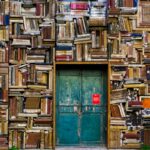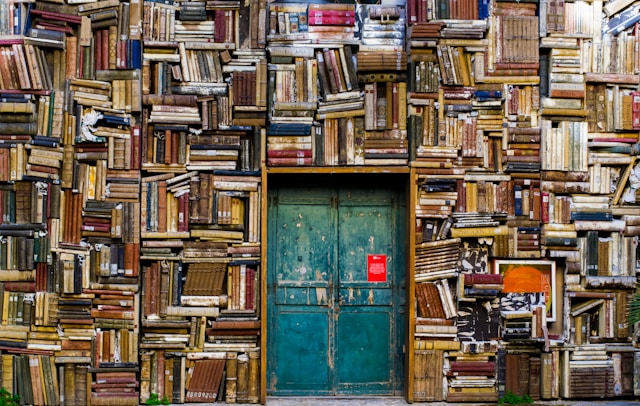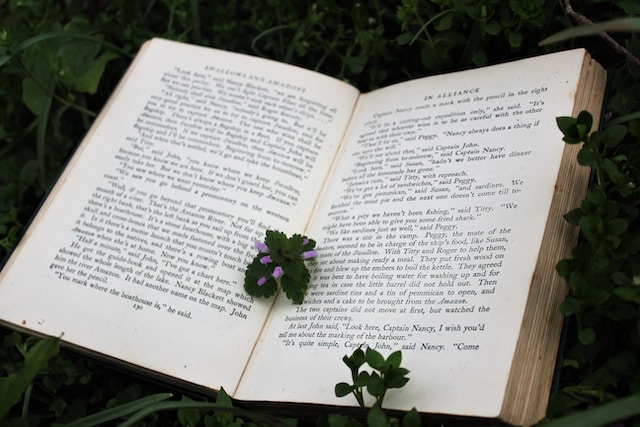
The Intersection of Literature and Technology: How Modern Tools Enhance Reading Experiences
Introduction
The fusion of literature and technology has revolutionized the way we consume, interact with, and appreciate written works. From the advent of e-readers to the rise of audiobooks and digital libraries, modern tools have significantly enhanced the reading experience, making literature more accessible and engaging for a global audience.
E-Readers and Digital Libraries
E-readers, such as the Amazon Kindle and the Kobo, have transformed the reading landscape by offering a portable and convenient way to carry hundreds of books in one device. These devices come with features like adjustable text size, built-in dictionaries, and the ability to highlight and take notes, making reading more interactive and customizable.
Digital libraries have further expanded access to literature. Platforms like Project Gutenberg and Google Books offer vast collections of free e-books, allowing readers to explore classic and contemporary works from anywhere in the world. This democratization of access has made it easier for people to discover new genres and authors, enriching their reading experience.
Audiobooks and Multitasking
Audiobooks have surged in popularity, providing an alternative way to consume literature. Services like Audible and Scribd offer extensive libraries of audiobooks that can be enjoyed while commuting, exercising, or performing other tasks. This flexibility allows readers to incorporate literature into their daily routines more seamlessly.
“Audiobooks have allowed me to enjoy more books than ever before,” says Sarah Thompson, an avid reader. “I can listen to my favorite novels while driving or working out, making the most of my time.”
Interactive and Immersive Reading Experiences
The integration of multimedia elements into digital books has created interactive and immersive reading experiences. Enhanced e-books may include videos, audio clips, animations, and interactive diagrams that enrich the narrative and provide deeper context. For instance, educational textbooks with interactive features can make learning more engaging and effective for students.
Additionally, platforms like Wattpad and Inkitt allow authors to publish their works online, where readers can comment, vote, and interact with the story as it unfolds. This creates a dynamic and collaborative reading environment, where feedback can influence the development of the narrative.
Personalized Reading Recommendations
Artificial intelligence and data analytics have also played a crucial role in enhancing the reading experience by providing personalized recommendations. Algorithms analyze readers’ preferences and reading habits to suggest books that match their interests. This personalized approach helps readers discover new books and authors that they might not have encountered otherwise.
“Thanks to personalized recommendations, I’ve discovered many hidden gems that I wouldn’t have found on my own,” remarks John Davis, a book enthusiast. “It’s like having a personal librarian who knows exactly what I like.”
Social Media and Literature
Social media platforms have become powerful tools for promoting literature and fostering communities of readers. Bookstagram, BookTok, and Goodreads are popular platforms where readers share reviews, discuss books, and connect with other literature enthusiasts. These communities create a sense of belonging and encourage more people to read and share their thoughts on books.
Moreover, social media has given authors a direct channel to engage with their audience. Writers can use these platforms to share updates, interact with readers, and even crowdsource ideas for their next projects. This direct engagement strengthens the bond between authors and their readers, creating a more intimate literary experience.
Challenges and Considerations
While technology has brought numerous benefits to the world of literature, it also presents challenges. The convenience of digital formats can sometimes lead to issues of digital fatigue, where readers feel overwhelmed by screen time. Additionally, the ease of self-publishing on digital platforms can result in an oversaturation of content, making it difficult for readers to find high-quality literature.
Another consideration is the preservation of digital works. Unlike physical books, which can endure for centuries, digital formats depend on technology that may become obsolete. Ensuring the long-term preservation of digital literature is an ongoing challenge for archivists and librarians.
Conclusion
The intersection of literature and technology continues to evolve, offering exciting possibilities for enhancing the reading experience. From e-readers and audiobooks to interactive content and personalized recommendations, modern tools have made literature more accessible, engaging, and enjoyable. As we embrace these advancements, it’s important to balance the benefits with the challenges to ensure that the rich tradition of literature thrives in the digital age.
“In the same way that Bizzo Casino has transformed the gaming industry, modern tools are revolutionizing the world of literature,” comments an industry expert. “By integrating technology with reading, we can make literature more dynamic and accessible for everyone.”
The future of literature lies in its ability to adapt and innovate, blending the timeless appeal of storytelling with the limitless possibilities of technology. This synergy promises to enrich our reading experiences and inspire a new generation of literature lovers.
Expanding Accessibility and Inclusivity
One of the most significant benefits of modern technology in literature is its potential to expand accessibility and inclusivity. E-books and audiobooks make it easier for people with disabilities to enjoy literature. For example, text-to-speech features and audiobooks are invaluable for those with visual impairments, while adjustable text sizes and background colors in e-readers can aid those with dyslexia.
Furthermore, technology has made literature more accessible across different languages and cultures. Translation apps and services allow readers to enjoy works that were previously inaccessible due to language barriers. This global access fosters a greater appreciation for diverse literary traditions and promotes cross-cultural understanding.
Enhancing Educational Resources
In the educational sector, technology has revolutionized how literature is taught and consumed. Digital textbooks and online resources provide students with interactive and engaging ways to study literature. Features such as searchable text, hyperlinks to related content, and multimedia elements enhance comprehension and retention.
Online platforms and learning management systems enable collaborative learning, where students can share insights and discuss interpretations of texts in virtual classrooms. This interactive approach encourages critical thinking and a deeper engagement with literary works.
Future Prospects of Literature and Technology
As technology continues to advance, the future prospects for literature are both exciting and boundless. Virtual reality (VR) and augmented reality (AR) are poised to offer immersive reading experiences, where readers can explore literary worlds in three-dimensional space. Imagine walking through the streets of Victorian London while reading a Dickens novel or experiencing the battle scenes of “The Iliad” in a virtual environment.
Blockchain technology also has potential applications in literature, particularly in digital rights management and royalty distribution. Smart contracts could ensure that authors are fairly compensated for their works, protecting intellectual property in the digital age.
In conclusion, the intersection of literature and technology offers unprecedented opportunities to enhance reading experiences. By embracing these innovations, we can make literature more accessible, engaging, and inclusive, ensuring that the timeless art of storytelling continues to thrive in the modern world.




